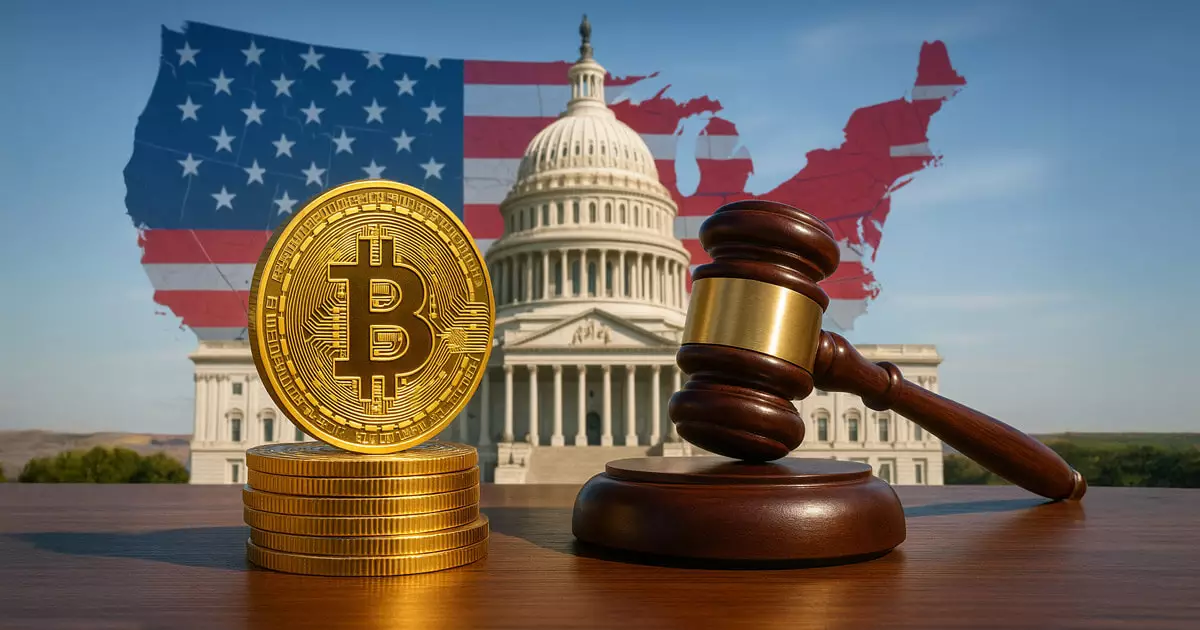The Digital Asset Market Clarity Act, introduced by House Financial Services Committee Chairman French Hill, represents a pivotal moment in the evolving landscape of cryptocurrency regulation. This 249-page bill attempts to delineate a federal framework governing most cryptocurrencies while distinguishing between securities and commodities. Such a legal framework is indeed a long-overdue development as the crypto market has often operated in a haze of ambiguity that has stifled innovation. However, while the intentions may be honorable, the implications of such a sweeping regulatory measure deserve careful scrutiny.
The act defines crucial terms such as “digital commodity” and “permitted payment stablecoin,” which form the basis for its broader regulatory scheme. In aiming to establish clarity, it could inadvertently stifle the very entrepreneurial spirit it seeks to support, especially when combining intricate definitions with imposing regulatory frameworks. Furthermore, the addition of a four-year safe harbor for primary token offerings may sound enticing, but there’s a risk that such provisions could create a false sense of security for new ventures still navigating the volatile crypto market.
The Regulatory Oversight Dilemma
One of the most contentious aspects of the act is the proposal to assign the Commodity Futures Trading Commission (CFTC) exclusive jurisdiction over spot trading, brokerage, and custody of digital commodities. While this might seem like a simplification, it can also dilute the expertise of the Securities and Exchange Commission (SEC), which has considerable experience in dealing with financial securities. By segregating digital commodities from securities oversight, the bill runs the risk of creating gaps in regulatory enforcement that could lead to consumer harm or market instability, effectively leaving investors in a lurch.
Critics might argue that this bifurcated approach to oversight could introduce a bureaucratic nightmare, contradicting the very essence of what a decentralized crypto ecosystem should be. The legislation attempts to create clarity but could instead sow confusion regarding where responsibilities lie. A regulatory environment that is fragmented is rarely conducive to market confidence. To support American entrepreneurship and promote healthy market growth, a more integrated approach to regulation might be required.
Market Democratization vs. Control
The proponents of the Digital Asset Market Clarity Act tout it as a means to democratize access to digital assets, with some lawmakers framing it as essential consumer protection. While it is vital to have a regulatory framework that prioritizes consumer safety, the language of the bill raises questions about the true intention behind these protections. Is it genuinely aimed at democratizing cryptocurrency markets, or is it simply an avenue for the government to exert control over an industry that has long thrived on principles of decentralization and self-governance?
Ohio Republican Warren Davidson’s emphasis on self-custody and transaction freedom suggests an understanding of the core ethos of cryptocurrency. However, when layered with new regulatory frameworks, the goal of preserving individual liberties may come into conflict with state oversight. The result could be a paradox where the regulation designed to protect consumers ends up limiting the very freedoms that attracted people to cryptocurrencies in the first place.
Innovative Growth and Global Leadership
Chairman Hill’s assertion that the bill aims to secure America’s position as a global leader in digital assets has merit. In a rapidly evolving technological landscape where other nations are racing to establish their own regulatory regimes, the United States cannot afford to lag behind. However, the key here is to ensure that the United States does not merely create a regulatory structure for the sake of control but instead fosters an environment where innovation can flourish.
Asserting global leadership in digital assets requires a strategy that embraces new technologies while maintaining core principles of fairness and freedom. The flimsy balance of regulation and innovation is a delicate dance that necessitates vigilance. The opportunities for blockchain technology are immense, but regulatory frameworks that hamper those opportunities will do a disservice to entrepreneurs and investors alike.
While the Digital Asset Market Clarity Act is undoubtedly a significant step towards creating a clearer regulatory environment for cryptocurrencies in the United States, it risks overreach. A vital question remains: will this legislation pave the way for a vibrant digital economy, or will it entrap innovators in a web of regulations that inhibit growth? Balancing the needs for oversight and innovation should be a priority if America wishes to maintain its leadership in this promising sector.


















